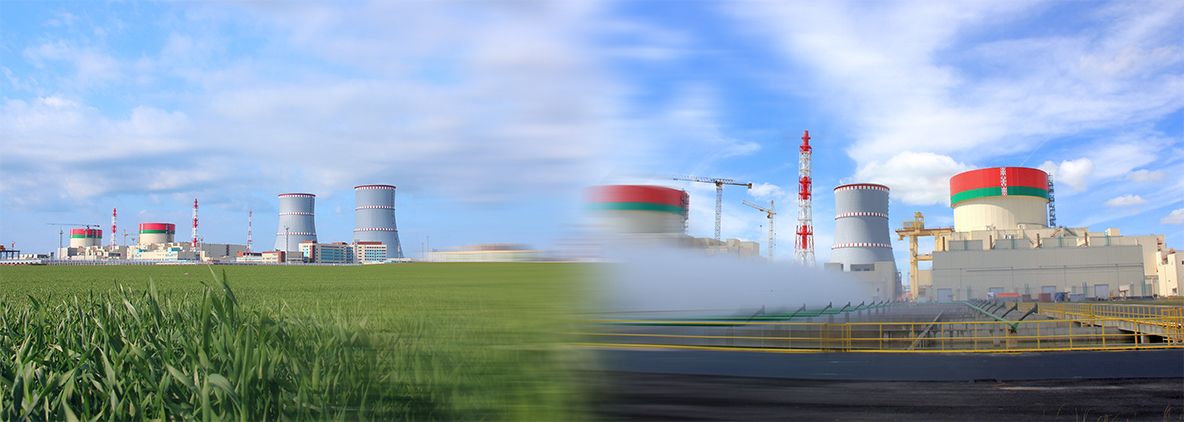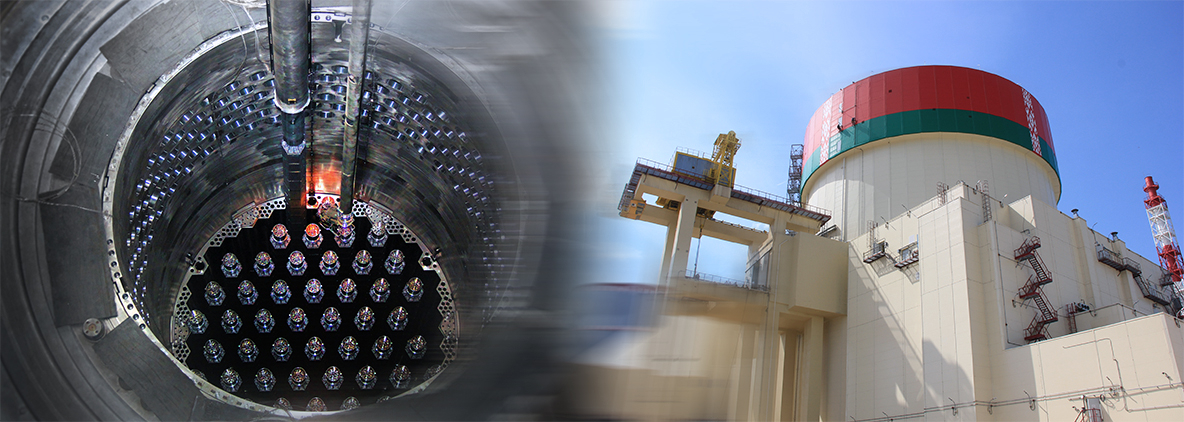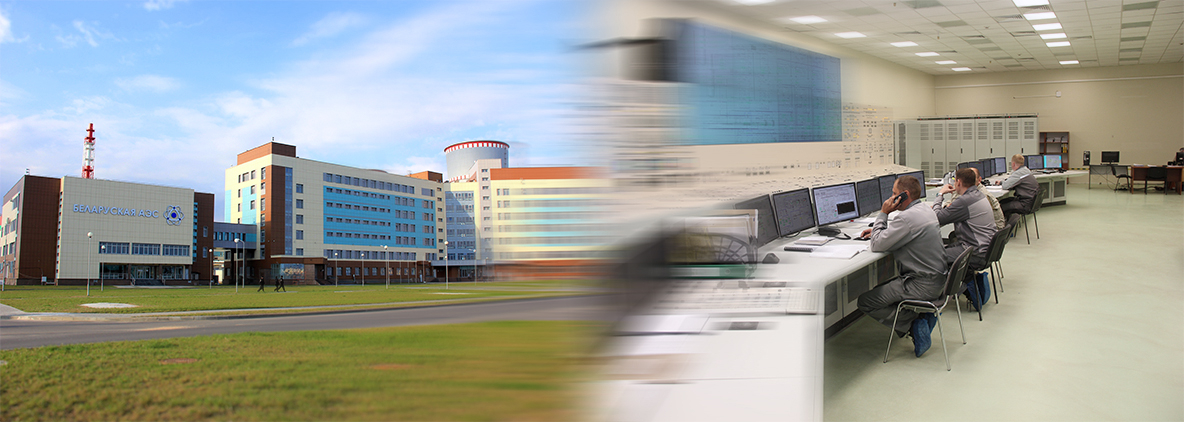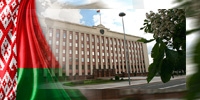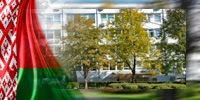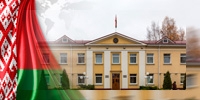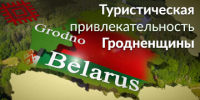The nuclear power plant is built according to Russian WWER-1200 project of the "three plus" generation. It consists of two power units with a total capacity of 2,400 MW. The project complies with the strictest standards and recommendations of the International Atomic Energy Agency (IAEA) and is differed by increased safety characteristics.
On May 31, 2012 a license was received to locate an NPP. The construction work at nuclear unit 1 started in November 2013, at nuclear unit 2 - in April 2014. In accordance with the General Contract for the construction of the NPP, the commissioning of nuclear units is planned by 2020.
Construction of the NPP in the republic will provide:
- annually replacing natural gas in the amount of up to 5 billion c. m, increasing the energy security of the republic;
- reducing greenhouse gas emissions;
- ensuring the removal of obsolete and inefficient generating capacities of the Belarusian energy system;
- raising the economy of the country and the development of other branches of the economy to the brand new level;
- giving a powerful impetus to the development of the NPP construction region.
At present, full-scale construction and installation work has been started at 123 out of 130 facilities and structures of the first and second nuclear units of Belarusian NPP.
The main building of the NPP is the reactor building, which houses the main equipment of the reactor installation, designed to convert nuclear energy into thermal energy.
The reactor building is a structure consisting of two protective shells and internal structures located on a common foundation slab.
The purpose of the inner protective shell is to prevent the release of radioactivity into the external environment in case of an accident. The diameter of the internal prestressed shell is 44.0 m, the thickness of the cylindrical part is 1200 mm, the dome is 1.100 mm.
The purpose of the outer protective shell is to perceive external dynamic loads. The diameter of the outer shell is 51.6 m, the thickness of the cylindrical part is 0.8 m, the dome is 0,6 m.
The outer surface of the dome is at the level of +70.2 m.
Between the outer and inner shells, there is an annular space of 1,800 mm width.
On April, 1 2017, the reactor vessel of the first nuclear unit was installed in its regular place, on September 7, 2017, the main circulation pipeline was welded. Circles of the dome of the protective shell are set. Currently, electrical and thermal installation work is carried out on the nuclear unit. On the nuclear unit No. 2, work is completed on the construction of the metal structures of the inner protective shell: the dome circles have been installed, preparatory work has begun for reinforcement and concreting.
On October 21, 2017, the reactor vessel for the nuclear unit No. 2 was delivered to the production site of Belarusian NPP.
The next main building is a turbine building, in which a turbo generator, an electric generator and auxiliary turbine systems are located. The turbine building is a rectangular body 121.0х51.0 m in size, 37.0 m height.
A chimney-type cooling tower is designed to cool water to the condenser of the turbine K-1200-6,8 / 3000 with a capacity of 1,200 MW.
At Belarusian NPP, there is one cooling tower per unit. The height of the cooling tower is 167 m, the diameter of the base is 128.4 m, the diameter of the outlet section is 80.9 m.
On the cooling tower of the first nuclear unit, the installation work has been completed, the protective coating and reflective elements have been applied.
Training center
In 2016, the Training Center for the training of operational and maintenance personnel was put into operation, with full-scale and analytical simulators. Thanks to this, it is possible to train personnel using the material and technical base of its own Center.
In the training center, there is a full-scale simulator of the block control panel of the station.
With the start-up of the Training Center, it became possible to train personnel using the material and technical base.
On October, 19 2017, a training exercise took place to respond to radiation accidents. The purpose of the exercise is to check the readiness of the rapid response system, which is also important in the process of developing emergency action plans outside the NPP industrial site. Within a radius of 3 km from Belarusian NPP, the evacuation of the population was tested, the readiness of the NPP personnel was checked to localize the incidents with practical training of actions on the simulators of the station's block control panel. The participants are representatives of the republican bodies of state administration, representatives of the CSTO and the CIS states. The Ministry of Emergency Situations, the Ministry of Internal Affairs, the Ministry of Defense, the Ministry of Health, the Ministry of Energy of Belarus and the Ministry of Emergency Situations of Russia were involved in the development of the events.
The completion of the exercise was commented by Deputy Prime Minister Vladimir Semashko. According to him, at this planned exercise, the Ministry of Emergency Situations and other agencies showed absolutely complete readiness for what could only theoretically happen. "However, we must be prepared for any surprises. All the observers and participants of the exercises, the guests noted the high level of preparedness for the liquidation of emergency situations, "the Deputy Prime Minister said.
Social sphere
37 houses or 2356 apartments were put into operation with a total area of 149850.2 sq. m. Of these, 1027 rental apartments with a total area of 63227.0 sq. m. and 1329 apartments in dormitories with a total area of 86623.2 square meters. The buildings have 3-5 and 7 floors.
Information Center
The Information Center of Belarusian Nuclear Power Plant was opened in 2009. In 2015, the Information Center moved to a new building.
During its operation, the Information Center was visited by more than 13 thousand people. Employees of the Center take an active part in international specialized exhibitions and regional events.
On September 19, at the IAEA Headquarters, during the 61st session of the Agency's General Conference, the exposition of Belarusian Nuclear Power Plant "Nuclear Energy Program of Belarus: Priority - Security" was presented.
Stress-tests
Belarus has published a national report on stress tests of the NPP. The national report on the targeted reassessment of safety (stress tests) of Belarusian NPP is available on the website of the Department of Nuclear and Radiation Safety of the Ministry of Emergency Situations of Belarus (Gosatomnadzor).
The national report provides information on the legislative and regulatory framework for ensuring the safety of nuclear facilities, information on the NPP site and general characteristics of the nuclear units, and the concept of ensuring the safety of the plant. During the stress tests, the tolerance of the nuclear power plant was examined for extreme external influences: earthquakes, floods, extreme weather conditions, as well as the protection of the NPP in the event of a loss of power supply and the loss of the final heat sink. A separate chapter is devoted to the management of severe accidents. In conclusion, possible measures are taken to improve the safety of the NPP when these events occur.
The report was prepared by an interdepartmental working group with the methodological support of European experts. The results of the stress tests showed that the safety systems of Belarusian NPP are developed taking into account all the external events, and the buildings, structures and equipment of Belarusian nuclear power plant are designed in accordance with the current regulatory framework. Safety margins have been identified.
As a result of the stress tests, an action plan (road map) was drawn up to develop and implement the measures aimed at improving the safety level of Belarusian NPP. The report will be considered by European experts, the visit of the EU expert group to Belarus is planned.
Stress tests are a one-time unscheduled security reassessment. In accordance with the technical requirements of the European Nuclear Safety Regulators Group (ENSREG), stress tests are a targeted reassessment of nuclear power plants in light of the events that took place at Fukushima in 2011. In 2011, Belarus joined the Mutual Declaration of the European Union and its Neighboring States on the comprehensive assessment of the NPP risks and safety and assumed the obligations to perform stress tests.
This material was prepared by the staff of Scientific Institution "JIPNR-Sosny" and the Information Center of Belarusian NPP.





